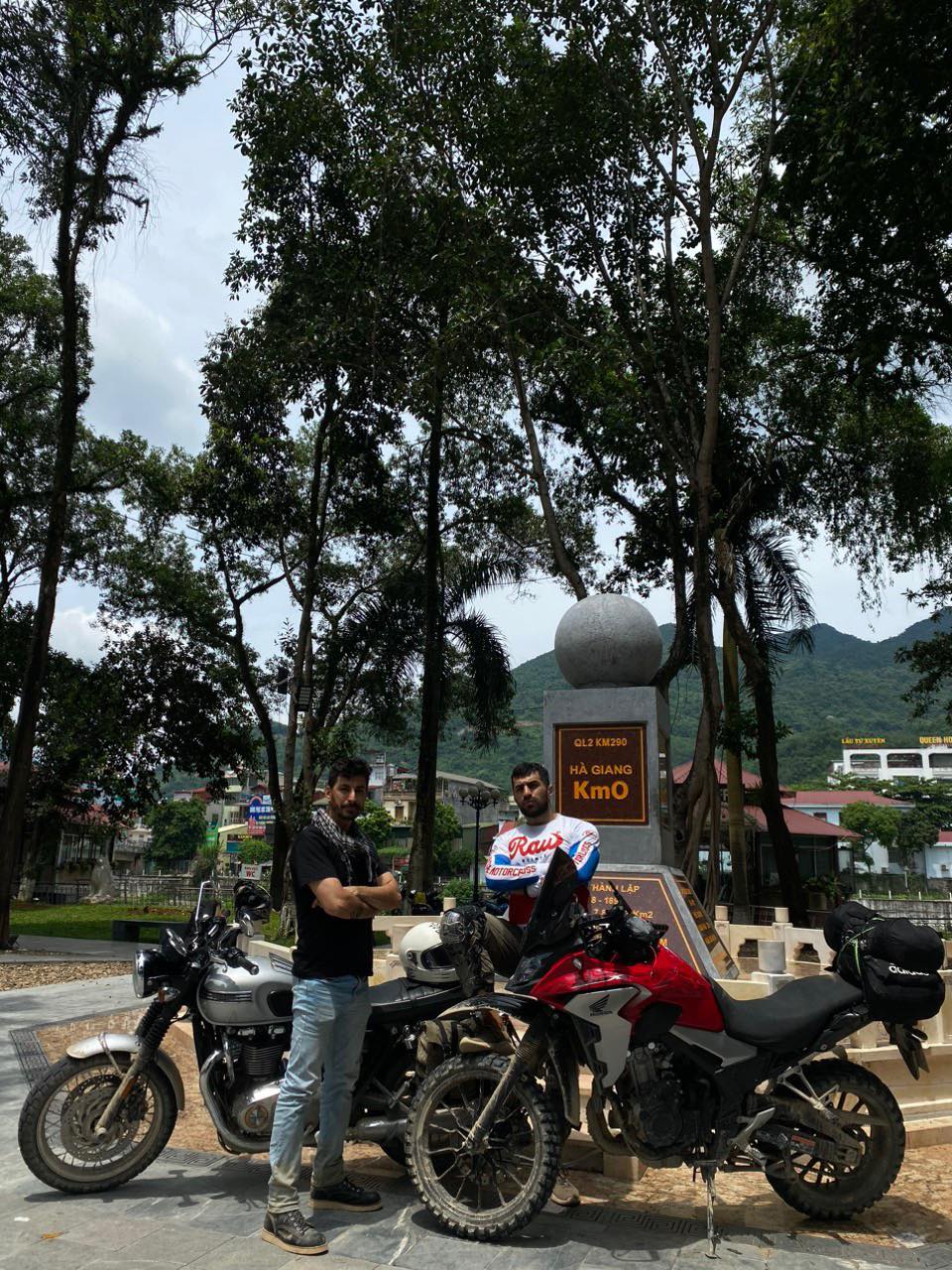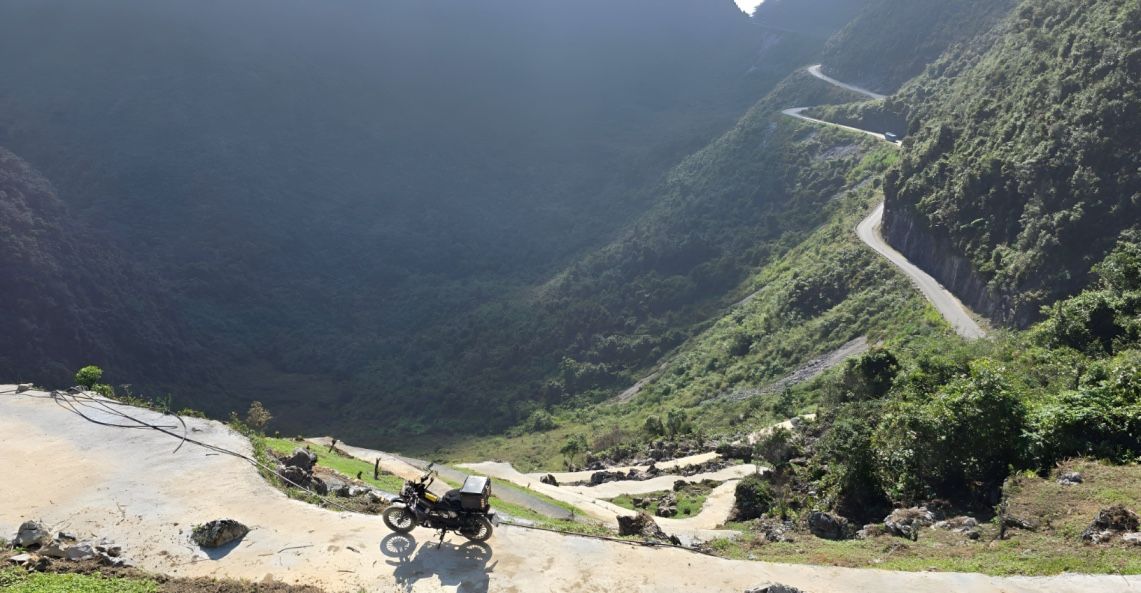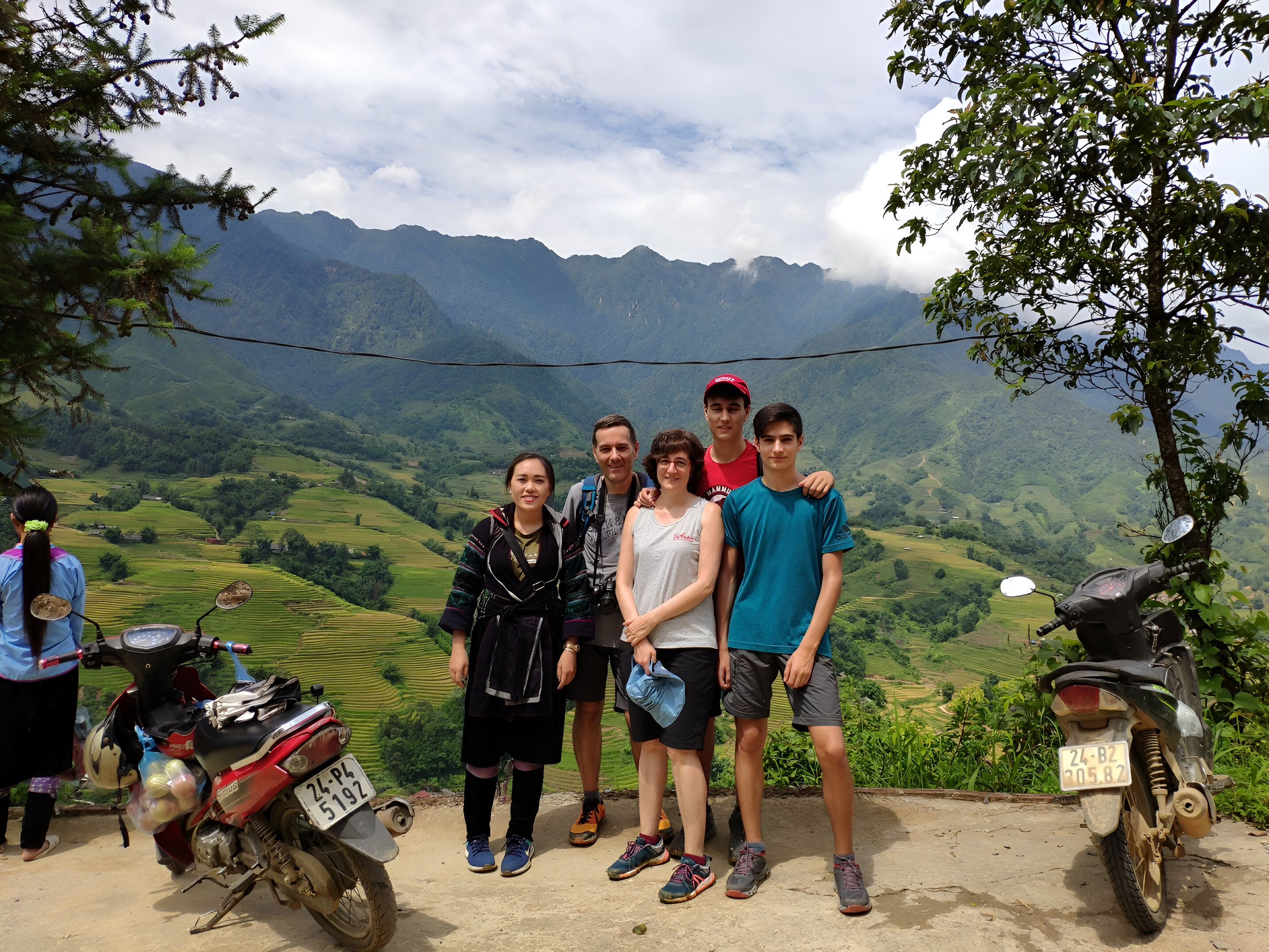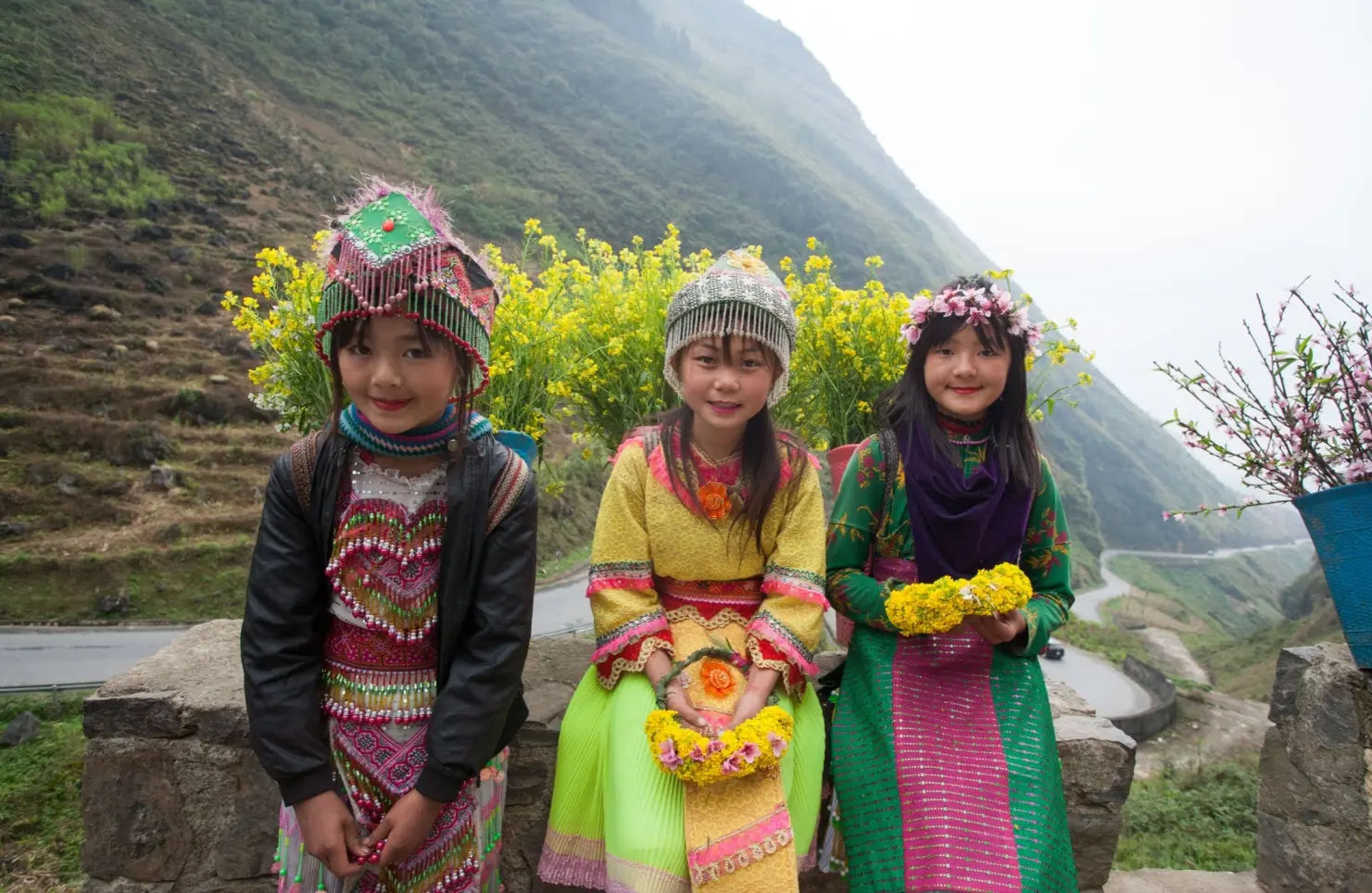Ha Giang vs Sapa Comparison: Sapa offers easier access and feels more like a typical tourist destination, with better-developed tourism, good hotels and options for more transportation. Ha Giang in the other hand doffers raw adventure and great landscapes much better than Sapas, Ha Giang delivers a deeper, more intense experience. Less touristy and far more authentic, Ha Giang surprises travelers with its rugged beauty, dramatic mountain passes, and rich ethnic culture.
Comparison between Sapa & Ha Giang: Which one worth the hype
If you’re planning a trip to the northern mountains of Vietnam, chances are you’ve heard of Ha Giang and Sapa. Both promise stunning scenery, ethnic culture, and winding mountain roads – but which one should you choose? The truth is, they’re not the same. Each offers its own rhythm, its own soul. Choosing between them depends on what kind of traveler you are and what you’re hoping to find in the mountains.

What Ha Giang and Sapa Share in Common
Before diving into their differences, it’s worth noting that Ha Giang and Sapa share the same northern soul. Both are mountain regions rich in ethnic minority cultures, where locals still wear traditional clothing and maintain age-old customs. The landscapes are equally stunning, with terraced rice fields, misty peaks, and deep valleys that shift with the seasons.
In both destinations, you’ll find chances to trek, stay in local homestays, and connect with nature and people in a meaningful way. The cool climate, dramatic views, and slower pace of life offer a refreshing break from the cities. Whether you choose Ha Giang or Sapa, you’ll experience the charm of Vietnam’s highland heritage.
- Check out Vietnam luxury private tours
Here is the map showing Sapa and Ha Giang and their distances from the center of Hanoi. Note, Sapa doesnt have an airport, Ha Giang neither. The nearest is Hanoi airport.
Comparing Ha Giang and Sapa: The Differences
While both Ha Giang and Sapa offer stunning mountain scenery, each destination brings its own unique experiences, culture, and vibe to your Vietnam adventure.
Scenery: Gentle Beauty vs Rugged Majesty
Sapa is softer and more romantic. Its beauty lies in the graceful curves of rice terraces cascading down the hillsides, backed by layers of forested mountains. On misty mornings, clouds drift through valleys like something from a dream. The highest peak in Indochina – Fansipan – also adds to the region’s grandeur.
Ha Giang, by contrast, stuns with its wild, dramatic landscape. Think towering limestone mountains, narrow winding passes like Ma Pi Leng, deep canyons, and sharp rock formations stretching to the sky. It feels untouched – raw and powerful. The road itself becomes part of the adventure, with every turn revealing a new breathtaking view.
Accessibility & Transportation: Easy Ride vs Remote Roads
Sapa is much easier to reach. From Hanoi, you can take a sleeper bus or train to Lao Cai, then a short ride up to Sapa town. Roads are in good condition, and the tourism infrastructure is well-developed. You don’t need to ride a motorbike – everything from trekking tours to transport is available and easy to book.
Ha Giang, on the other hand, is more remote. It takes about 6-8 hours by bus or van from Hanoi to reach Ha Giang city, and from there, exploring the region usually involves riding a motorbike or hiring a driver. The Ha Giang Loop is famous but requires confidence on winding mountain roads or going with a guide.

Accommodation: Comfort vs Homestay
Sapa offers a wide range of places to stay – from luxury resorts, boutique hotels, to cozy homestays. Whether you want a room with mountain views and a hot tub or a rustic bed in a hill tribe village, you’ll find it here. It’s tourist-ready, with options for all budgets and travel styles.
Ha Giang, in contrast, is simpler and more down-to-earth. Most accommodations are family-run guesthouses or traditional homestays in small villages. While they may lack luxury, they make up for it with warm hospitality, home-cooked meals, and an authentic glimpse into local life. In recent years, some stylish eco-lodges and well-equipped homestays have also popped up along the Ha Giang Loop.
Home to Ethnic Minorities of northern Vietnam
Both Ha Giang and Sapa are home to vibrant communities of ethnic minorities, but the experience of meeting them differs.
Sapa is home to ethnic groups like the Black H’mong, Red Dao, and Tay. However, due to years of tourism, local communities are more accustomed to visitors. Cultural exchanges are easier – many locals speak basic English and offer guided treks or handicraft workshops – but some experiences can feel more commercialized.
In Ha Giang, ethnic groups like the Black H’mong, Lo Lo, Tay, Dao, and Giay live in remote mountain villages, where traditional lifestyles are still well preserved. Locals wear colorful handmade clothing, and many still speak their native languages. Cultural encounters here feel authentic and unfiltered, especially in local markets like Meo Vac or Dong Van.
Atmosphere: Tourist crowds vs less travelled roads
Sapa has long been a favorite among travelers, so its charm feels welcoming and familiar. Cafés, markets, and guided tours are easy to find. The town center is lively – sometimes crowded – and surrounded by rolling hills and ethnic villages. While beautiful, parts of Sapa can feel touristy, especially during peak seasons.
Ha Giang, by contrast, holds a kind of quiet magic. The atmosphere is remote and untouched, where roads wind through misty passes and tiny villages nestle against the mountains. Life moves slowly, and interactions feel genuine. There are fewer crowds, fewer signs in English – but more of Vietnam’s raw, authentic soul.
Activities: Guided Adventures vs Raw Exploration
Sapa offers a variety of guided and accessible activities. You can trek through Muong Hoa Valley, visit ethnic villages like Lao Chai and Ta Van, take the cable car to Fansipan Peak, or explore local markets and herbal baths. With plenty of tours and English-speaking guides, Sapa is ideal for travelers who want structured adventures without the hassle.
Ha Giang is all about the journey. The top experience here is riding or joining a tour of the Ha Giang Loop, which takes you through Ma Pi Leng Pass, Dong Van, and Meo Vac. You can also trek to remote hill villages, explore local markets, or just absorb the breathtaking scenery. There are fewer signs, fewer tourist shops – but more freedom and discovery.
Best Time to Visit & How Long to Stay
Both Sapa and Ha Giang are most beautiful during spring (March-May) and autumn (September-October). These seasons bring clear skies, cool air, and vibrant landscapes. In spring, flowers bloom across the hills, and the weather is fresh and pleasant. In autumn, the rice terraces in both regions turn a rich golden color, perfect for photographers and nature lovers.
Sapa is easier to reach, so it works well for a shorter trip of 2-3 days. You can explore the main trekking routes, visit ethnic villages, and even take the cable car to Fansipan without needing much time.
Ha Giang, on the other hand, is more remote and rewarding with time. To complete the famous Ha Giang Loop and enjoy the scenery at a relaxed pace, you’ll need at least 3-5 days. The longer journey allows you to truly experience the region’s culture, landscapes, and local markets.
- Check out best time to travel to Vietnam
Sapa Or Ha Giang: Which one Matches Your Travel Style?
If you’re looking for gentle treks, scenic rice terraces, and easy cultural experiences, Sapa is the right choice. It’s ideal for travelers who want comfort, accessibility, and a taste of mountain life without going too far off track.
However, if you aim to see more remote villages, dramatic mountain passes, and raw local life, then Ha Giang is what should you choose. It’s an adventure for those who love freedom, adventure, and a deeper cultural connection.
Can’t Decide Between Ha Giang and Sapa? Do Both
If you have about a week, a Ha Giang Sapa tour is the perfect way to experience two completely different faces of northern Vietnam. Spend 2-3 days in Sapa – trekking through rice terraces, visiting ethnic villages, and enjoying the cool, misty air. It’s an easy, relaxing start with good facilities and accessible trails.
Then, continue your journey north to Ha Giang, where everything feels more remote and dramatic. Plan for 3-5 days to explore the famous Ha Giang Loop, winding through rugged mountain passes and peaceful highland towns.
There’s no direct bus between Sapa and Ha Giang, but you can go via Lao Cai or Bac Ha by local transfer or private car. Some travel agencies offer combined tours, which make the route smoother and more time-efficient.
Final Thoughts: Is Ha Giang or Sapa Worth Visiting?
The short answer is Yes, they both are absolutely worth the hype and time to visit. And, it’s not just about checking off a place on the map – it’s about how a place makes you feel when you’re standing still, looking out, and thinking, “I’m really here.”
In Sapa, that moment might come as you walk between golden rice terraces, fog curling softly around your steps, while a local guide shares stories passed down for generations. In Ha Giang, it may hit you somewhere on a mountain pass – engine humming, air sharp, and the valley below stretching farther than words can reach.
So is it worth it? Yes – if you’re not just looking for a destination, but for a place that shifts your sense of scale and pace. A place that stays with you. Ha Giang and Sapa aren’t just worth it – they’re the kind of places that remind you why you travel at all.







You May Also Like
Long Coc Tea Hills in Phu Tho: A Hidden Photography Spot Near Hanoi
Long Coc Tea Hills in Phu Tho is a breathtaking hidden gem in northern Vietnam, ...
The Ultimate Guide For Visiting Visit Vietnam In February: Weather, Festivals & Itineraries
Imagine walking through Hanoi’s Old Quarter as peach blossoms bloom in doorways, or sitting by ...
Toilets in Vietnam: A Traveler’s Guide for Squat Toilets, Public Bathrooms & Flushing Paper
Let’s be honest—when you travel, toilets matter more than you expect. In Vietnam, they quickly ...
20 Traditional Vietnamese Folk Games
Traditional folk games in Vietnam are more than just childhood pastimes. They are the living, ...
How to Register a Company in Vietnam (2026 Guide)
Foreign investors planning to do business in Vietnam face a multifaceted legal system and bureaucratic ...
Visiting Vietnam in January 2026: Weather, Costs, Festivals & Travel Tips
I visited Vietnam in January 2026, and I still remember the crisp, cool air in ...